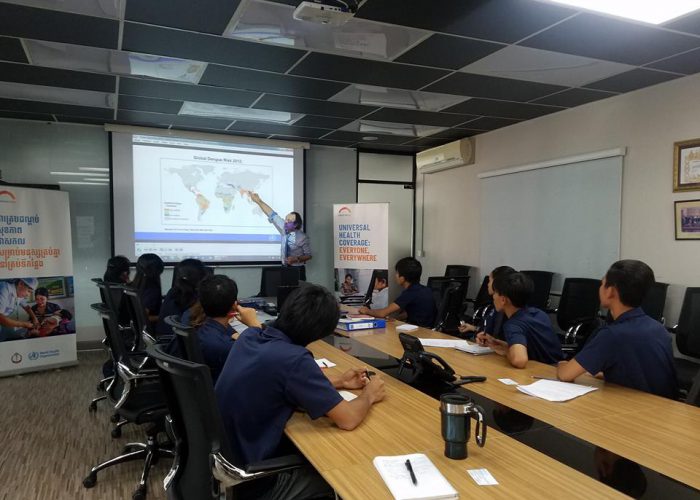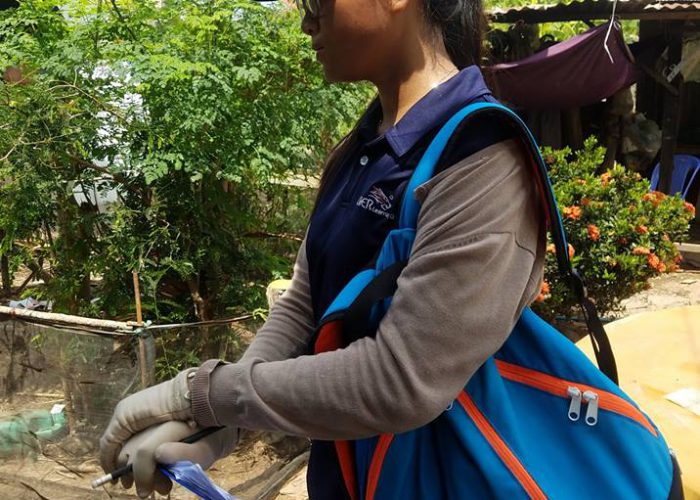Dengue fever cases in Cambodia increased by 30% in the first three weeks of the year. A dengue fever outbreak occurs every 4 to 5 years. The last outbreak in Cambodia was in 2012, and it was expected that an outbreak would happen in 2017, according to Phnom Penh Post. However, there wasn’t an outbreak last year, so it’s assumed that it will happen this year.
Dengue virus vectors, Aedes Egypti, mainly are found in urban areas, where they’re highly populated. In these areas, standing water containers and water storage such as flower vases, tanks and jars are commonly found and can be breeding ground for Aedes Egypti.
The information above has led us to do a risk analysis on dengue fever outbreak. We asked the villagers from two communities ‒ Chompous Kaek and Koh Krobey ‒ questions related to their knowledge on dengue fever and prevention behavior. We also did observations to determine the presence of mosquito larvae. We used this information to assess relationships between variables such as knowledge, prevention behavior, and perceived risk.
The final report is a potential resource for the Ministry of Health and World Health Organization based in Cambodia to identify the risk of dengue fever in areas like Chompous Kaek and Koh Krobey. It’s also helpful for the villagers in a way that it will bring their needs to the attention of those institutions. For example, larvicide, Abate, hasn’t been given to the villagers for years, and many are requesting for it.
Below is a section of the report that I’ve worked on.
Many people have some knowledge about dengue fever and are taking some actions to prevent mosquitoes from biting and breeding, but statistical analysis shows no evidence of an association between the two variables. In other words, none of the prevention behaviors are influenced by the knowledge people already have about dengue fever. Additionally, this particular finding is aligned with the result from the study on “Dengue knowledge, attitudes and practices and their impact on community-based vector control in rural Cambodia.”
In this observational study, there may be errors presented in this survey, such as response bias. For instance, people might most likely say they clean their water storage frequently, even though they don’t. Also, knowledge may not necessarily determine people’s actions; it is possible they can know something but not apply their knowledge to real life. By this means, we can’t make an appropriate conclusion about any causal relationship.
As mentioned above, villagers did exhibit some prevention behaviors against dengue fever; however, these behaviors were relegated to a few methods to prevent mosquitoes from biting and breeding. In addition, only about 30% of the people we surveyed have attended some forms of educational campaign related to dengue fever. This means those people would benefit from an awareness campaign, educating them more on methods to prevent dengue fever.



